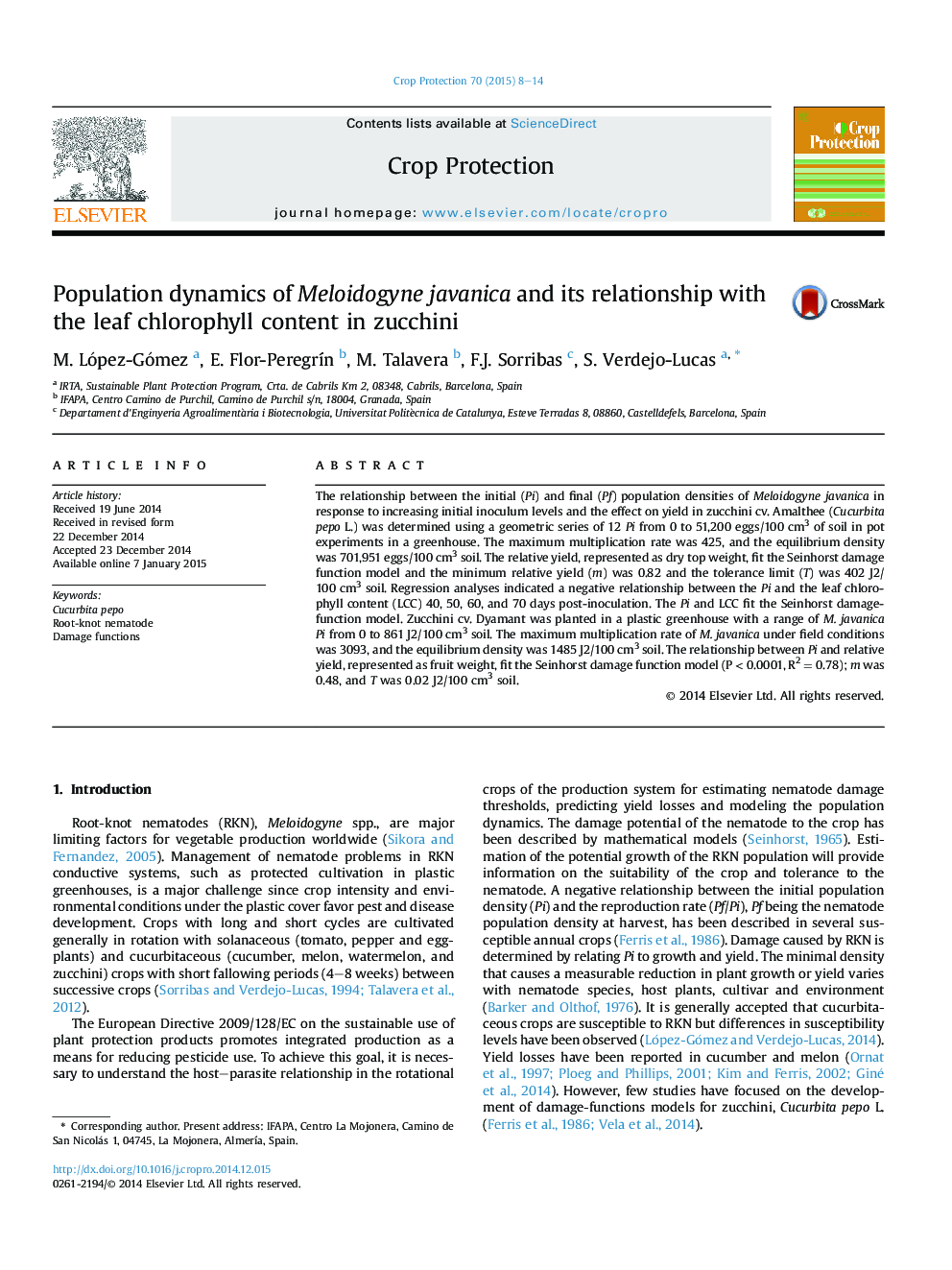| Article ID | Journal | Published Year | Pages | File Type |
|---|---|---|---|---|
| 4505782 | Crop Protection | 2015 | 7 Pages |
•Zucchini squash showed tolerance to Meloidogyne javanica in protected cultivation.•The leaf chlorophyll content declined with increasing initial population densities.•The leaf chlorophyll content can be a practical tool to assess nematode damage.•Root damage caused by M. javanica was directly related with yield losses.•Zucchini yield was significantly reduced in heavily infected plants.
The relationship between the initial (Pi) and final (Pf) population densities of Meloidogyne javanica in response to increasing initial inoculum levels and the effect on yield in zucchini cv. Amalthee (Cucurbita pepo L.) was determined using a geometric series of 12 Pi from 0 to 51,200 eggs/100 cm3 of soil in pot experiments in a greenhouse. The maximum multiplication rate was 425, and the equilibrium density was 701,951 eggs/100 cm3 soil. The relative yield, represented as dry top weight, fit the Seinhorst damage function model and the minimum relative yield (m) was 0.82 and the tolerance limit (T) was 402 J2/100 cm3 soil. Regression analyses indicated a negative relationship between the Pi and the leaf chlorophyll content (LCC) 40, 50, 60, and 70 days post-inoculation. The Pi and LCC fit the Seinhorst damage-function model. Zucchini cv. Dyamant was planted in a plastic greenhouse with a range of M. javanica Pi from 0 to 861 J2/100 cm3 soil. The maximum multiplication rate of M. javanica under field conditions was 3093, and the equilibrium density was 1485 J2/100 cm3 soil. The relationship between Pi and relative yield, represented as fruit weight, fit the Seinhorst damage function model (P < 0.0001, R2 = 0.78); m was 0.48, and T was 0.02 J2/100 cm3 soil.
